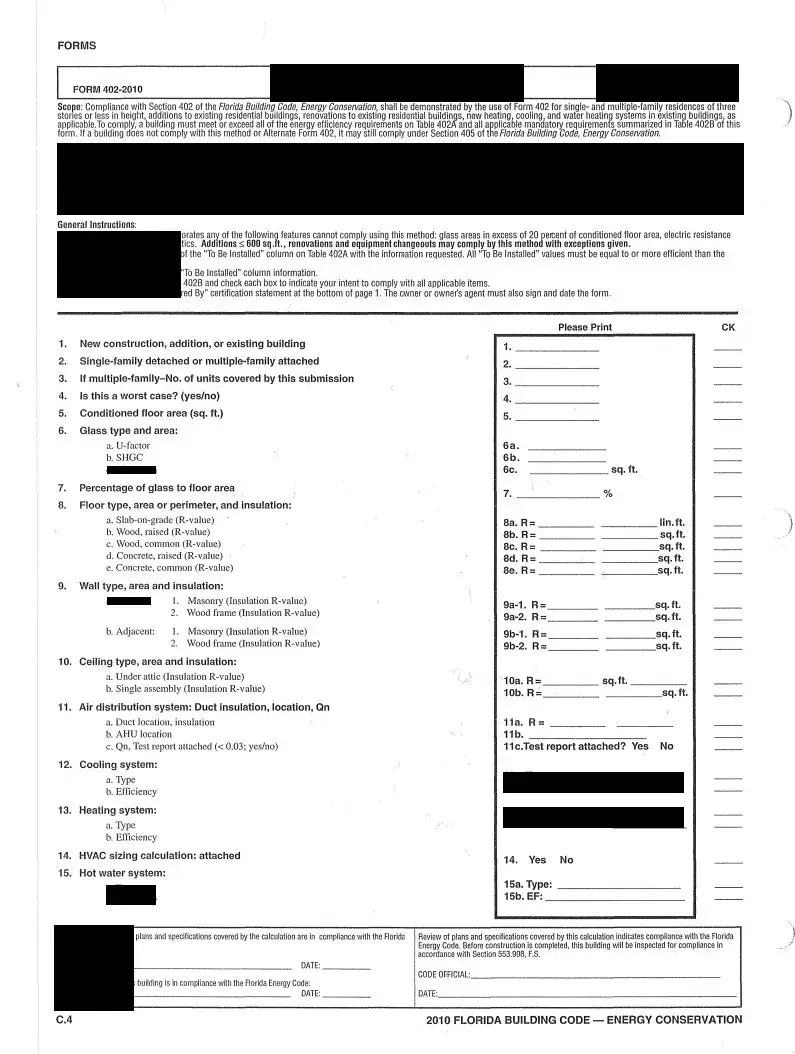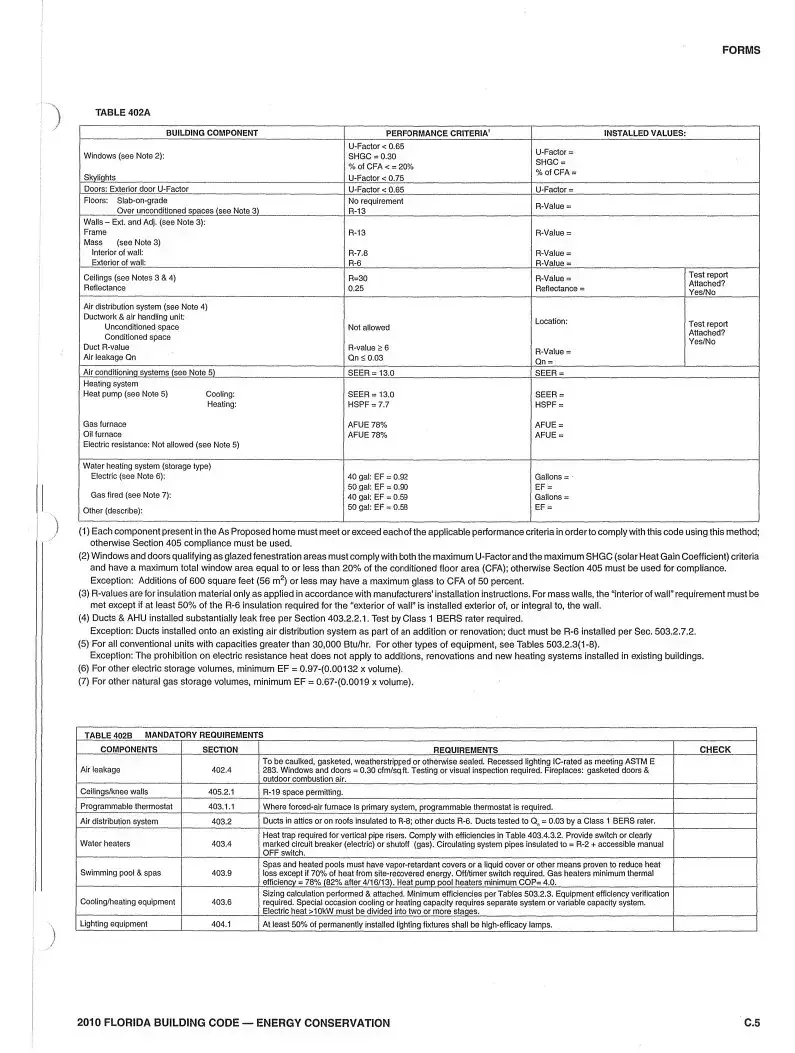The Florida Energy Form plays a crucial role in ensuring that residential buildings comply with energy efficiency standards set forth in the Florida Building Code. Specifically, this form is utilized for single-family and multi-family residences that are three stories or less, as well as for additions and renovations to existing buildings. To demonstrate compliance, builders must fill out Form 402, which requires detailed information about various building components, including windows, walls, ceilings, and HVAC systems. The form is structured around two key tables: Table 402A outlines energy efficiency requirements that must be met, while Table 402B summarizes mandatory requirements that builders must adhere to. Notably, certain construction features, such as excessive glass areas or the use of electric resistance heating in attics, disqualify a project from using this compliance method. To ensure adherence to these standards, the form also mandates that all installed values for insulation, U-factors, and other components meet or exceed specified performance criteria. Additionally, a certification statement at the bottom of the form requires the signature of the owner or their agent, affirming their commitment to comply with the Florida Energy Code. Understanding the intricacies of this form is essential for builders, homeowners, and contractors alike, as it not only facilitates compliance but also promotes energy conservation in Florida’s residential construction landscape.

 common
common 